Paris stands with Orlando. Tonight @LaTourEiffel will wear the rainbow flag as a tribute to the victims. #lovewins pic.twitter.com/MDk4ZamrRg
— Anne Hidalgo (@Anne_Hidalgo) June 13, 2016
Violence begets violence. It peels away the veneer of civilization, the veneer that separates us from the other animals that inhabit this earth. Those other animals kill, in the main, for food. Not us. We kill out of fear.
From Israel’s Haaretz, a lament for label imprecision:
The time that elapsed between the initial reports on American networks of the carnage in the Pulse nightclub in Orlando – when the incident was labelled a “mass-shooting”— and its definition as a terror attack symbolizes the West’s 21st century difficulty in classifying murders carried out for ideology, religion and politics (emphasis added).
I instinctively cringe from this assessment, from the implication that there is an all-in-one label that puts aberrant acts like this is a nice, tidy box.
But labels matter, because they frame discussion around solutions.
For President Obama the murders were acts of “terror” and “hate”:
"This was an act of terror and act of hate." —@POTUS on the tragic shooting in #Orlando https://t.co/i7fOS38GzH
— White House Archived (@ObamaWhiteHouse) June 12, 2016
Deputy Attorney General Yates called this “a horrifying act of evil and terror”:
Deputy Attorney General Yates: "What happened in Orlando yesterday was a horrifying act of evil and terror." https://t.co/G1sHDiSRo3
— ABC News (@ABC) June 13, 2016
There’s that word, that label, writ thrice: terror.
Terrorism.
Something that happens “to us” by “the other”. A label in America that is attached almost exclusively to acts of mass murder carried out by someone with brown skin who has at least a passing connection to the third religion to evolve from the teachings of Abraham.
Labels disguise behavior that is common, not exceptional.
Americans (Omar Mateen was born in New York) kill one another at a greater rate than citizens in peer nations.
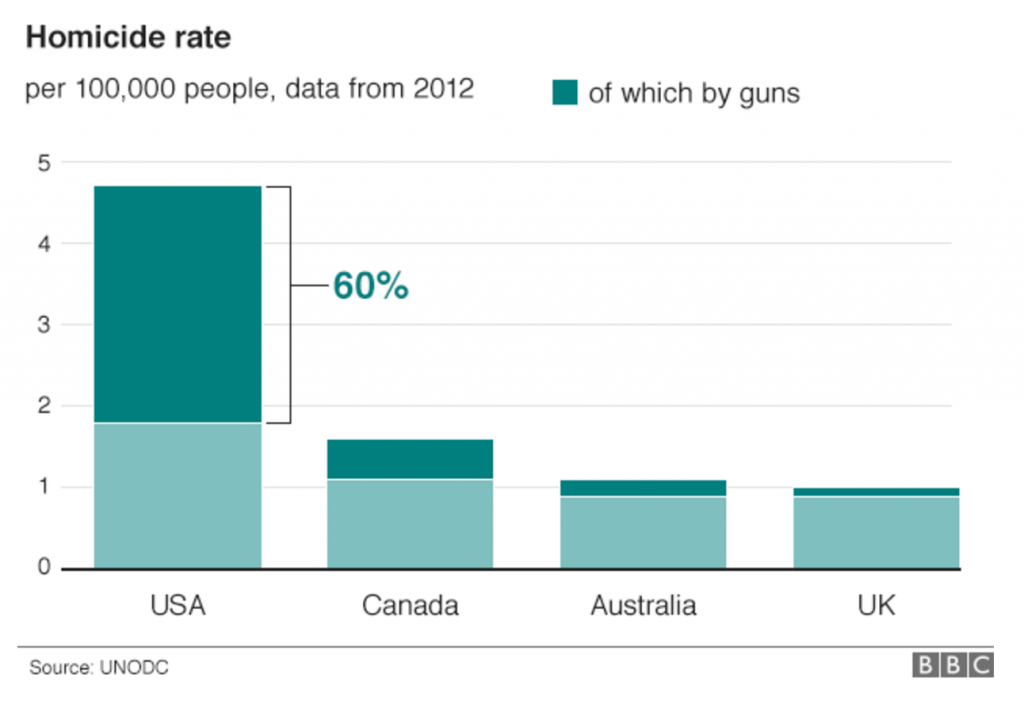
In America, mass shootings (of strangers) have become the norm.
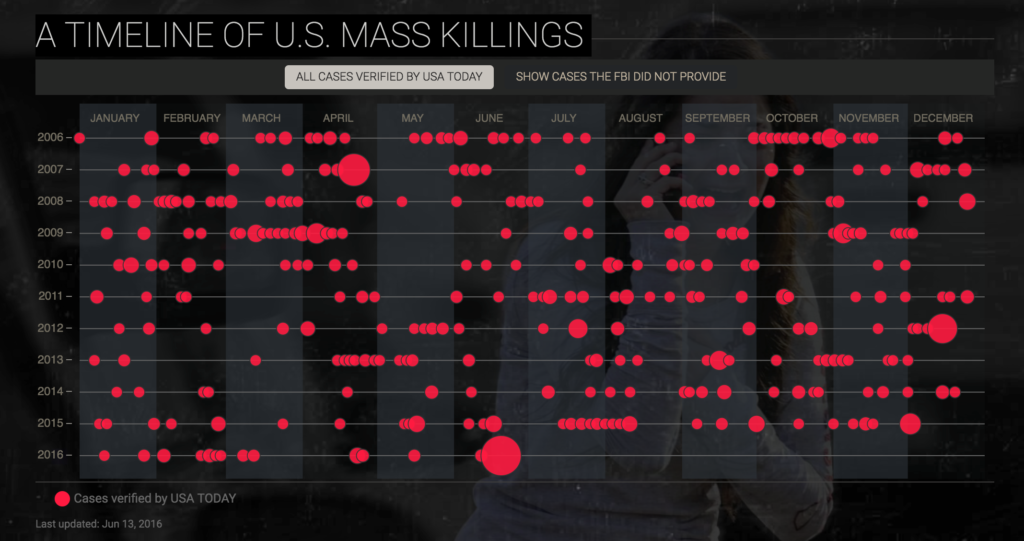
This is the state of gun violence in America: on average, we have a mass shooting (four or more people shot in one incident, not including the shooter) five out of every six days.
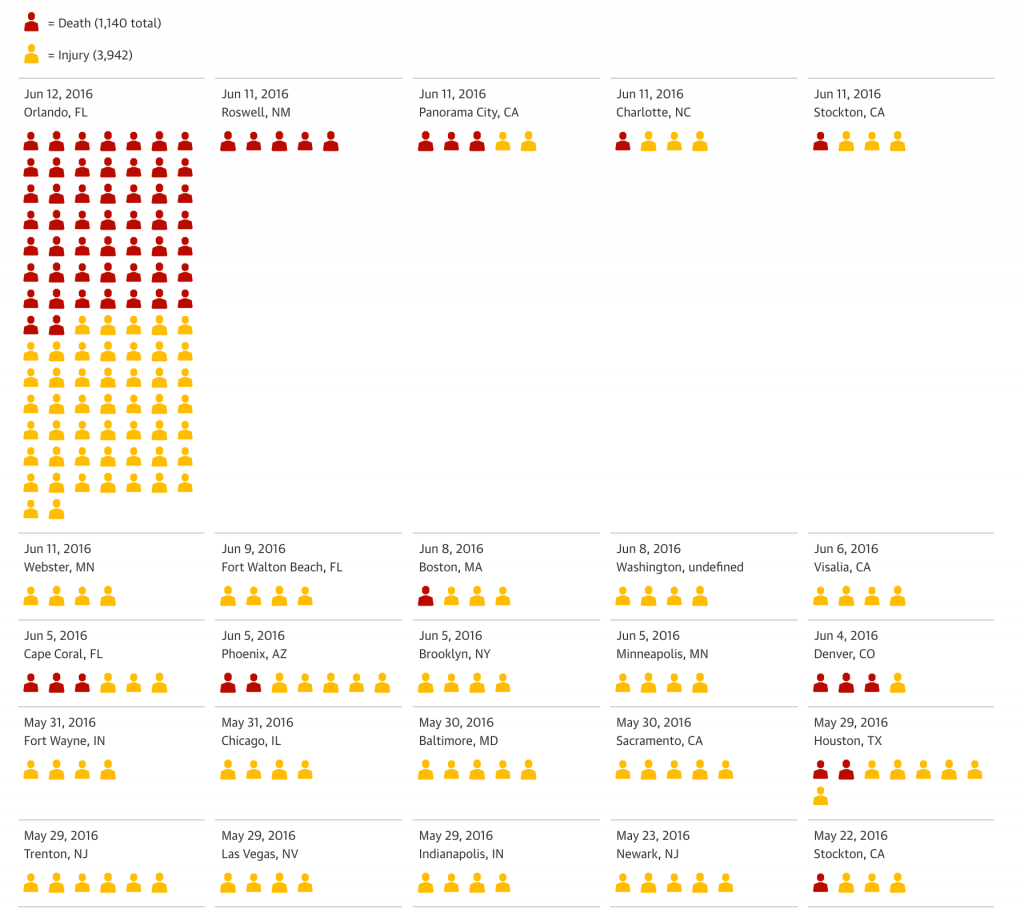
The rate has escalated. The FBI analyzed active shootings from 2000-2013 — defined as “an individual actively engaged in killing or attempting to kill people in a confined and populated area.” The rate of active shootings — a subset of all gun violence — almost tripled when comparing 2000-06 to 2007-13.
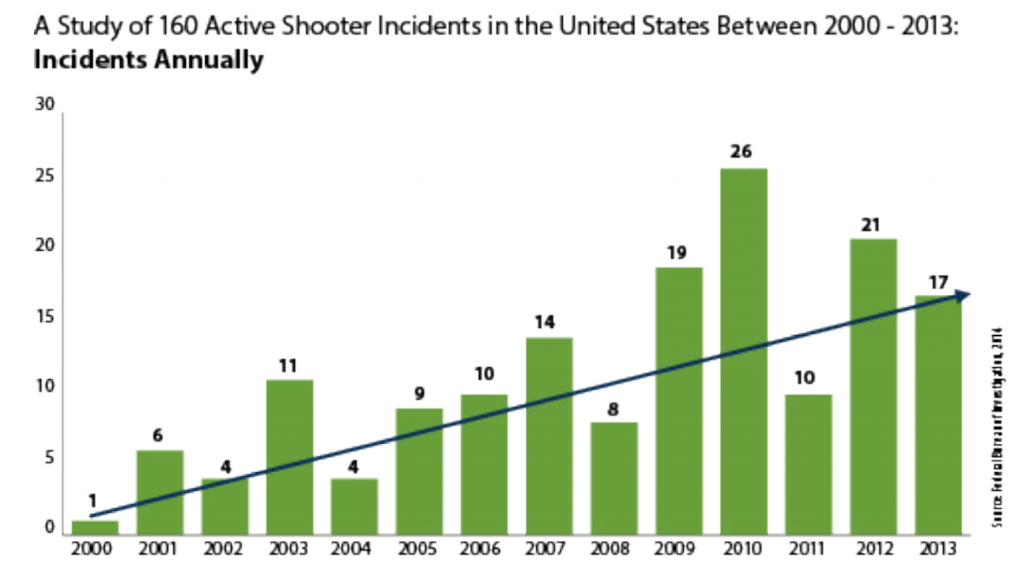
However you want to count them, mass shootings are far too common; the toll is greater than the total number killed because even more are injured.
In 2016, to date, almost 300 people have died in mass shootings.
Yet mass shootings account for only a small percentage firearms-related murders that occur annually in the US.
A culture of fear
Many have criticized America’s gun culture. But what are the ingredients that cause such a culture to thrive?
Economic insecurity breeds fear, the deep-seated Maslovian kind. Fear is first cousin to anger and brushes shoulders regularly with hate, prejudice, and disdain.
Opportunistic politicians seize the fear, stimulate it, then ride it to electoral victory. Two years ago, my home state, Georgia, made guns legal (practically) everywhere. This spring, the Georgia legislature passed legislation that would have also made guns legal on college campuses. Gov. Nathan Deal vetoed the legislation:
[W]hy all of the sudden in 2016 do we need weapons in the hands of college students where they have historically never been allowed? Nobody has answered that question satisfactorily for me.
Why, indeed? Fear or pandering?
Can we agree that in America the concept of inclusion, treating those who are LGBT with the same respect that greets those who are straight and cisgender, is the law of the land? That treating those whose skin is dark with the same respect that greets those whose skin is light is the law of the land?
I cannot comprehend how seeing two men kiss could trigger such fear that someone could believe that the only solution would be suicide-by-cop while killing as many of those “others” as possible.
But I’m not a southern Baptist:
[In a 1996 statement, the Southern Baptist Convention said] even a desire to engage in a homosexual relationship is always sinful, impure, degrading, shameful, unnatural, indecent and perverted… [The SBC website] affirm[s] God’s plan for marriage and sexual intimacy – one man, and one woman, for life. Homosexuality is not a ‘valid alternative lifestyle.’
The actions of southern politicians also provide a clue.
A new law in Mississippi lets any person or business deny services to same-sex couples because of religious objections. In North Carolina, the governor signed a law banning cities from passing LGBT anti-discrimination ordinances and barring transgender people from using bathrooms that match their gender identity. Tennessee also has a “bathroom bill,” plus a bill that lets mental health professionals refuse to treat LGBT patients.
Most state legislators are older (average age of all state legislators is 56) white males. How much of our culture of fear is being driven by demographic changes that make those men uncomfortable?
The U.S. does not have a monopoly on fear or demographic change.
What we have is a monopoly on ease of access to weapons of mass murder.
Israel’s Haaretz explains:
The availability of weapons in the U.S. is inconceivable to outsiders. Not just the ease with which a “civilian version” of a military assault rifle can be bought over the counter, but the possibility of loading it with customized magazines holding a hundred bullets, more than three times the number even armies use. The potential for bloodshed by one isolated and individual attacker is so much greater.
To make matters worse, the republic that is America overseas a patchwork of lenient gun laws.
In Florida, the AR-15 semi-automatic rifle is easier to buy than a handgun. That’s because there is a three-day waiting period for a handgun, but no waiting period for long arms. Likewise, the AR-15 is easier to buy in Indiana, which requires a permit for handguns but not for longarms.
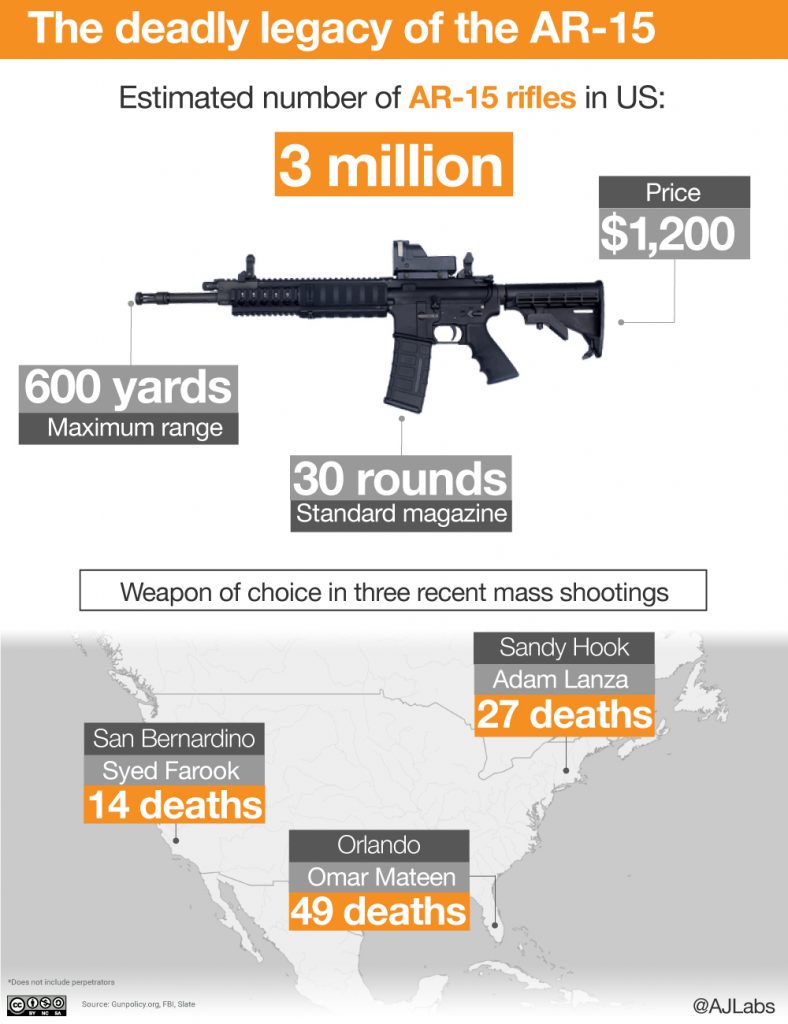
You cannot convince me that the men who plotted to overthrow the King of England (ahem, terrorists) envisioned a day like Sunday, a day made possible by a handful of organizations and corporations with their well-trained national congressmen and state officials at heel.
The author of a 1966 law review assessment of the Second Amendment shows that I have legal and historical ground to stand on. He makes clear that the English Bill of Rights (1689) was a precedent familiar to the men who wrote our founding law.
Since a specific “right to bear arms” has not manifested itself in other constitutional schemes, it seems a peculiarly Anglo-American phenomenon premised on a longstanding mistrust of standing armies and a concomitant reliance on the armed citizen-soldier… [T]he right to keep and bear arms in the minds of constitutional draftsmen in England and in the United States was inextricably bound up in the felt need for a well-regulated militia.
The Virginia Bill of Rights gives credence to this argument:
That a well regulated militia, composed of the body of the people, trained to arms, is the proper, natural, and safe defence of a free State; that standing armies, in time of peace, should be avoided, as dangerous to liberty; and that in all cases, the military should be under strict subordination to, and governed by, the civil power.
I was surprised to learn that in 1966 “firearms control statutes have almost universally been adjudged constitutional when challenged on ‘right to bear arms’ grounds.” Of course we’ve had a standing army (and its sycophant, the military-industrial complex) since WWII.
With that in mind, Ralph J. Rohner suggests:
[A] single approach to the problem of delineating the right [to bear arms] seems possible, and it is this: the nature of the right to bear arms should be expressed in terms of the purposes for which firearms can conceivably be used.
Using that framework, it should be possible – and reasonable – to differentiate civilian iterations of military-grade weapons from those used for hunting and sport.
It should be possible – and reasonable – to differentiate between lethality, which we have already done via the ban on fully automatic weapons.
Focusing on the purpose of the firearm relieves us of the need to anticipate technological advances.
Questions of detail abound. What to do with the millions of arms in the wild – like those 3 million AR-15s? How to convince the vocal minority that such restrictions are in their long-term best interests?
But a modern delineation of the right to bear arms misses the key element in America’s gun culture, the fundamental problem.
Is change possible in a nation revels in its role as global cop and world’s largest arms dealer, that leads the world in mass incarceration, that arms its local police with the machinery of war, and that profits from global trade in “action movies” (and peripherals) and shoot-em-up “video” games?
Until those badges of violence become symbols of shame, innocent Americans will continue to be maimed and killed by young, disaffected men empowered by a culture of guns.
:: Talk to me on Twitter
https://twitter.com/mikebairdMP/status/742285464191651841
Known for gnawing at complex questions like a terrier with a bone. Digital evangelist, writer, teacher. Transplanted Southerner; teach newbies to ride motorcycles. @kegill (Twitter and Mastodon.social); wiredpen.com
















